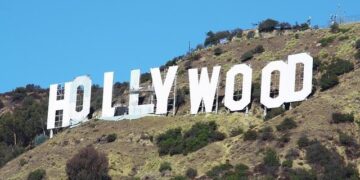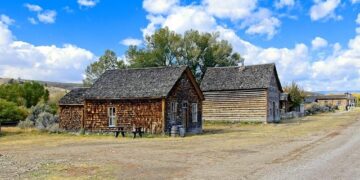The state of Amazonas, the largest in Brazil, recorded 3,181 fires from Oct. 1-23, an all-time record for this month, according to monitoring by Brazil’s space agency, INPE.Surrounded by fires, Manaus, the state capital, has been shrouded in a thick layer of smoke, increasing the number of medical emergencies for respiratory problems.Researchers writing in the journal Nature Ecology & Evolution say fires have become the main factor in the degradation of the Brazilian Amazon, threatening to undo the results of environmental protection policies.Water levels in the Solimões, Negro, Madeira and other great Amazonian rivers have dropped to unprecedented levels, forcing families to live on boats and drag themselves through the mud in search of water and food.
The Brazilian Amazon has seen a recent flare-up of fires, compounded by a severe drought that has reduced water levels in rivers and lakes to unprecedented lows. The state of Amazonas, the largest in the country, recorded 3,181 fires from Oct. 1-23, an all-time record for the month, according to monitoring by Brazil’s space agency, INPE. The figure was more than double the number of fires in October 2022.
“It’s a significant increase in fires linked to human activities during the harsh drought, a very favorable condition for fire to spread,” Fabiano Morelli, a researcher at INPE’s fire monitoring program, told Mongabay by phone. “Our analysis indicates that the hot and dry conditions will continue in northern Brazil for the next two months, potentially leading to more fires.”
Surrounded by fires, several cities in Amazonas, including the capital, Manaus, were shrouded in a thick layer of smoke — a grim situation further affecting a population already alarmed by shortages linked to the drought in the Amazon rivers. The suffocating cloud made Manaus one of the cities with the worst air quality in the world on Oct. 11, according to the World Air Quality Index platform.
 Firefighting teams use a helicopter to contain the flames near Manaus, the capital of Amazonas state. Image courtesy of Alex Pazuello/Secom/Agência Amazonas.
Firefighting teams use a helicopter to contain the flames near Manaus, the capital of Amazonas state. Image courtesy of Alex Pazuello/Secom/Agência Amazonas.
Local authorities have reported an increase in hospital admissions for respiratory problems related to toxic smoke and have recommended the use of masks and other personal protection measures. The regional office of Fiocruz, Brazil’s leading public health research institute, issued a statement from a researcher warning that people and animals are being “poisoned” by the smoke from the forest burning.
On Oct. 13, as the situation worsened, the federal government announced it was reinforcing the firefighting team in Amazonas state, increasing the number of trained firefighters to 289. Federal authorities also promised to provide two helicopters to help fight the fires.
Rodrigo Agostinho, head of IBAMA, the federal environmental protection agency, told local news outlet Amazônia Real that the fires had already advanced into primary rainforest. He said firefighting efforts are being hampered by logistical difficulties related to the drought. “We can’t take care of everyone at the same time,” Agostinho told Amazônia Real.
Brazil’s minister of environment and climate change, Marina Silva, blamed the lack of resources for responding to emergencies of this scale on the climate denial legacy of the previous government of Jair Bolsonaro, according to the newspaper O Estado de S. Paulo. At a press conference to announce firefighting measures on Oct. 13, she said the country is experiencing a climate emergency and asked people not to set fire to the land. “There is no natural fire in the region,” Silva said, as reported by the newspaper Correio Braziliense.
“Awareness campaigns are important for people to reduce their use of fire and prevent the problem from getting worse,” INPE’s Morelli said. “The current climate conditions are alarming and should only change with the arrival of consistent rainfall.”
On Oct. 18, the federal government announced the release of 647 million reais ($129 million) to mitigate the effects of drought in the Amazon region, including resources to boost firefighting efforts in Amazonas state.
 Firefighters work to extinguish a fire spreading in a forest area in the municipality of Iranduba, in Amazonas state. Image courtesy of Mauro Neto/Secom/Agência Amazonas.
Firefighters work to extinguish a fire spreading in a forest area in the municipality of Iranduba, in Amazonas state. Image courtesy of Mauro Neto/Secom/Agência Amazonas.
Fire degradation
The Amazon typically receives less rainfall during this time of year. But the 2023 dry spell has been exacerbated by two simultaneous natural events that inhibit cloud formation, further reducing the already low rainfall in the region.
One of these phenomena is El Niño, the abnormal warming of the surface waters of the equatorial Pacific Ocean, which produces east-to-west air currents over the Amazon Rainforest. The other factor is the warming of the waters of the northern tropical Atlantic Ocean, which creates north-to-south winds across the biome. These air currents prevent the formation of rain clouds, meteorologists told Mongabay.
Experts say this increased susceptibility to fires will likely play out again in the coming years, especially as climate change intensifies. In an article published Oct. 16 in the journal Nature Ecology & Evolution, researchers say fires have become the main factor in the degradation of the Brazilian Amazon, threatening the results of environmental protection policies.
The authors say it’s necessary to understand what has led to the increase in burnings to take urgent and coordinated action to eliminate the risk of uncontrolled fires. “The future of the Amazon Rainforest under climate change — even if illegal deforestation is zero — remains unclear with the threats of climate emergency, drought, and fire,” they write in their correspondence.
Patricia Pinho, deputy science director of the Amazon Environmental Research Institute (IPAM), agreed that fire has become an urgent topic. “The impacts of fires are very damaging to the Amazon ecosystem. We realize certain transformations are taking place in advance, with fire playing a preponderant role in this degradation process,” she told Mongabay by phone.
 Municipalities such as Manacapuru are depending on food aid deliveries due to the historic drought in the state of Amazonas. Rivers like the Amazonas (pictured) have reached record lows since data collection began. Image courtesy of Alex Pazuello/Secom/Agência Amazonas.
Municipalities such as Manacapuru are depending on food aid deliveries due to the historic drought in the state of Amazonas. Rivers like the Amazonas (pictured) have reached record lows since data collection began. Image courtesy of Alex Pazuello/Secom/Agência Amazonas.
State of emergency
The current drought in the Brazilian Amazon is regarded as historic. According to the Amazonas Climate Panel, 59 of the state’s 62 municipalities are in a state of emergency, with 590,000 people directly affected by the drought.
Falling water levels in the rivers and lakes have cut shipping traffic, the main form of transport in the region. This has limited the movement of people and goods by boat, making it even more difficult for remote communities to access health and education facilities, and left thousands of people facing water and food shortages. Wildlife has suffered as well, with reports of more than 100 river dolphins found dead in the region.
Folha de S.Paulo reported that families had left their homes in the Anavilhanas archipelago, in the Negro River, to live on boats as a way of being closer to the water — a precarious situation that is expected to continue until December. Isolated for weeks, residents along the banks of the Solimões, another major tributary of the Amazon River, have been dragging themselves through the mud in search of water and food, the O Globo newspaper reported.
 With the sky covered by in from fires, families along the Amazon River in Manaus receive humanitarian aid. Image courtesy of Gildo Smith/Semacc/Prefeitura de Manaus.
With the sky covered by in from fires, families along the Amazon River in Manaus receive humanitarian aid. Image courtesy of Gildo Smith/Semacc/Prefeitura de Manaus.
On Oct. 16, the Negro River recorded its lowest level ever, reaching 13.59 meters (44 feet) in Manaus. Since then, the water has fallen even lower. In Manacapuru, the Solimões reached its lowest volume in 55 years of measurements. Photos before and during the drought in Solimões show huge sandbanks where once there was water. The mighty Amazon River itself, formed by the confluence of the Negro and Solimões rivers, also reached the worst drought ever recorded on the island of Parintins. The situation is similar on the Madeira, the Amazon’s biggest tributary, and many other Amazonian rivers.
According to MapBiomas, a platform that monitors deforestation in the Brazilian Amazon in real time using high-resolution satellite images, Amazonas state recorded the lowest surface area covered by water since 2018 due to the drought affecting rivers, lakes and wetlands.
“The impact on aquatic biodiversity has been reported in several places, but has not yet been estimated and could reach alarming proportions,” said Carlos Souza Jr., a technical and scientific coordinator with MapBiomas, the main author of a note on the subject.
Pinho from IPAM said more intense and frequent droughts are making the Amazon Rainforest less and less humid. “Science has even been conservative in pointing out the risks of climate change for this unique and vulnerable ecosystem.”
Banner image: Firefighting teams use a helicopter to contain the flames near Manaus, the capital of Amazonas state. Image courtesy of Alex Pazuello/Secom/Agência Amazonas.
Amazon drought cuts river traffic, leaves communities without water and supplies
Citation:
de Oliveira, G., Mataveli, G., Stark, S. C., Jones, M. W., Carmenta, R., Brunsell, N. A., … Shimabukuro, Y. E. (2023). Increasing wildfires threaten progress on halting deforestation in Brazilian Amazonia. Nature Ecology & Evolution, 1-2. doi:10.1038/s41559-023-02233-3
FEEDBACK: Use this form to send a message to the author of this post. If you want to post a public comment, you can do that at the bottom of the page.
Amazon Destruction, Amazon Drought, Amazon People, Climate Change, Conflict, Deforestation, Drivers Of Deforestation, Drought, Environment, Environmental Law, Fires, Forest Fires, Governance, Indigenous Communities, Indigenous Groups, Indigenous Peoples, Indigenous Rights, Land Conflict, Land Rights, Politics, Rainforest Deforestation, Threats To Rainforests, Threats To The Amazon, wildfires
>>> Read full article>>>
Copyright for syndicated content belongs to the linked Source : MongaBay – https://news.mongabay.com/2023/10/people-and-nature-suffer-as-historic-drought-fuels-calamitous-amazon-fires/

















![[News] Japan Develops 10nm Nanoimprint Technology, with Potential to Tackle EUV Bottleneck – TrendForce](https://earth-news.info/wp-content/uploads/2025/12/329851-news-japan-develops-10nm-nanoimprint-technology-with-potential-to-tackle-euv-bottleneck-trendforce-360x180.jpg)













